Our creative customer purchased polished agate slabs at the Tucson Gem and Mineral Show and came into Artistry in Glass with a great idea to replace an ugly plexiglass front door sidelite. Learn how we collaborated to create a unique work of art.
What is agate?
Agate is a translucent, banded variety of chalcedony – a form of microcrystalline quartz. It generally forms by the deposition of silica from groundwater in hollow cavities of volcanic rocks. The coloration of agates is due to other minerals present in the silica. Beautiful agate slabs are available from numerous vendors on Amazon but note our warning below about dyed agates.
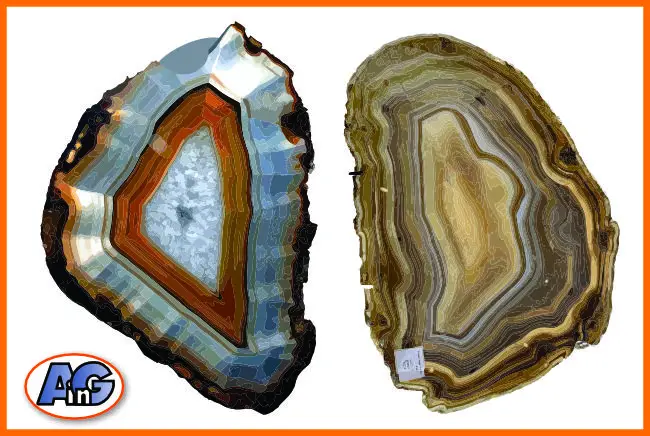
As an Amazon Associate, I earn from qualifying purchases
A Unique Agate/Glass Creation
In consultation with our customer, Artistry in Glass sandblasted tempered glass to create a frosted background that provides privacy in the entryway. The areas behind each agate slab were left clear so that maximum light was available to illuminate the rocks.
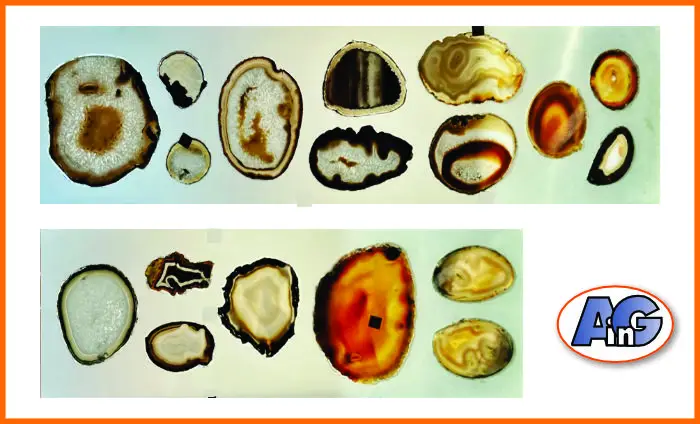
Our enterprising customer then arranged his collection of polished slabs and attached them to the glass using UV-activated clear resin and the UV lamp pictured below:
Our recommended UV-activated adhesive sets up quickly in UV or sunlight to a hard glossy finish. The slabs were attached using a thin bead of resin around the edges and set using the lamp below:
Our favorite UV lamp is inexpensive and powerful – it hardens the UV resin in seconds.
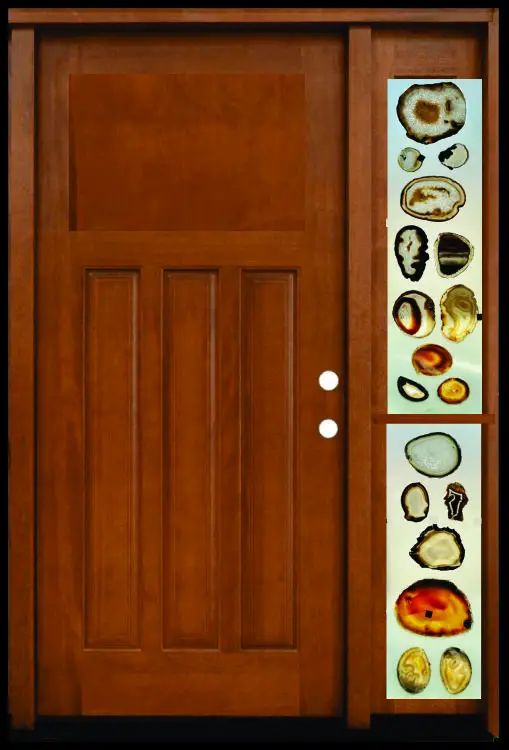
Amazing agatiferous sidelites provide privacy, light, and geological interest to this Foothill home
What is the age of these agates?
Our customer’s agates come from basalts (volcanic rocks) found in the State of Paraná in Southern Brazil. These igneous rocks erupted about 135 million years ago (early Cretaceous time) and covered an area of over 1,000,000 square kilometers. Much later, heated ground water percolating through lava tubes and other cavities deposited banded chalcedony to form these exquisite agates.
Most agates are made up of banding parallel to the walls of the cavity but occasionally a fascinating type of horizontal banding is also found. Detailed investigation of the “water-line” agates has revealed that the horizontal bands formed 43 to 63 million years ago – much later than the 135 million-year-old host basalts.
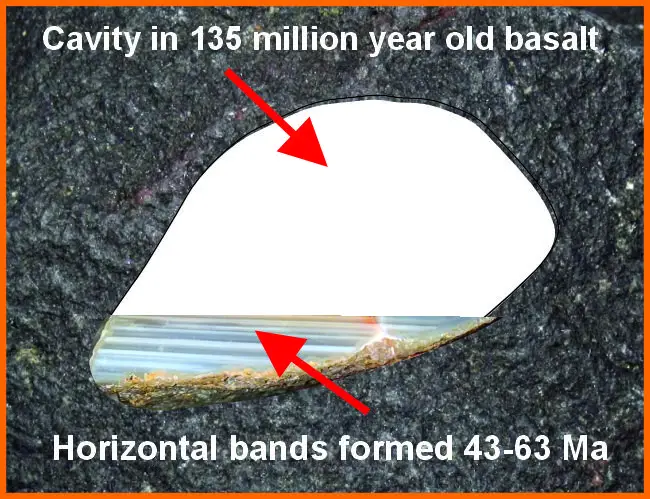
Geochronology showed that the wall parallel banding was formed still later – by deposition of silica-rich gels 20 to 30 million years ago.
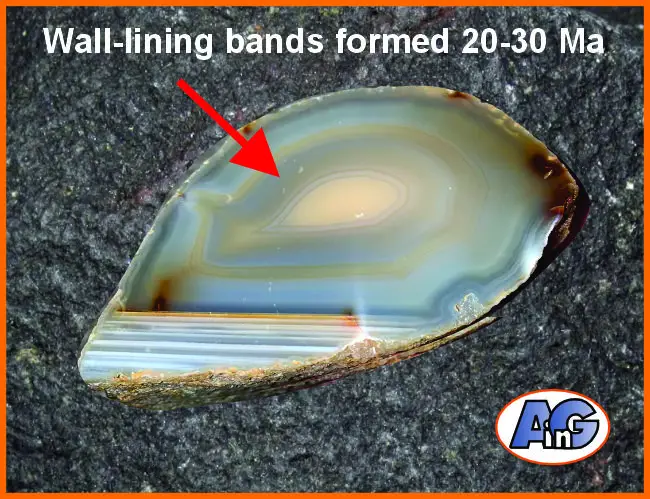
Artificially colored agates
Many rock hounds are deceived or charmed by garish multicolored agates that are widely available on Amazon and elsewhere. Chalcedony, being a fibrous variety of silica, is slightly porous – this enables the banding to be permanently dyed by strong chemical solutions.
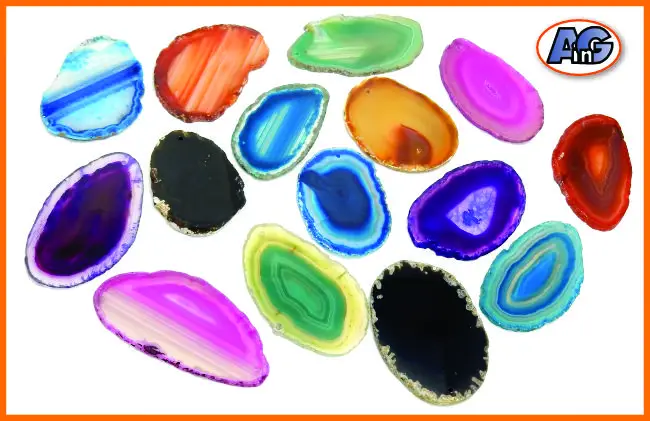
Call us old-fashioned or even snobbish but geologists find these phony agates very offensive to the eye – mainly because they are garish and unnatural. We much prefer the subtle beauty of natural rocks and here echo the sentiments of the immortal Frank Lloyd Wright who referred to these as “the colors of the ribbon counter”.


